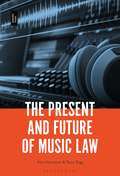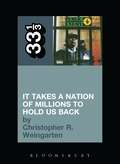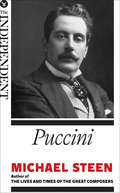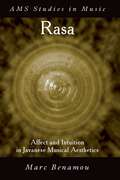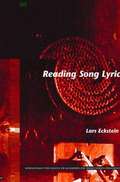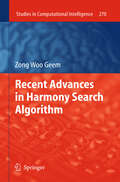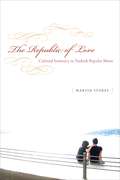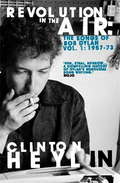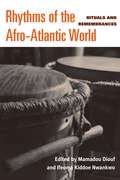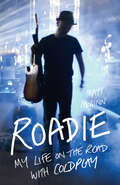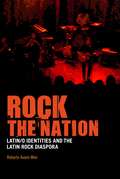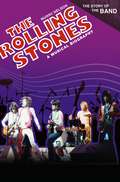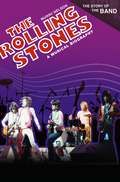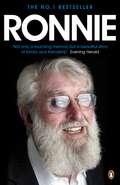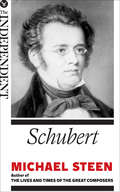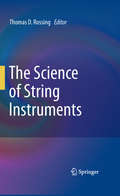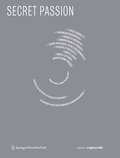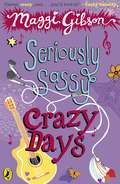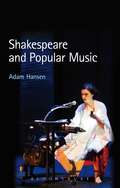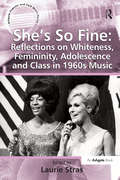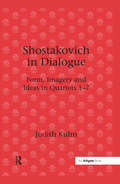- Table View
- List View
Post-Jazz Poetics: A Social History
by J. RyanAfrican-American expressive arts draw upon multiple traditions of formal experimentation in the service of social change. Within these traditions, Jennifer D. Ryan demonstrates that black women have created literature, music, and political statements signifying some of the most incisive and complex elements of modern American culture. Post-Jazz Poetics: A Social History examines the jazz-influenced work of five twentieth-century African-American women poets: Sherley Anne Williams, Sonia Sanchez, Jayne Cortez, Wanda Coleman, and Harryette Mullen. These writers engagements with jazz-based compositional devices represent a new strand of radical black poetics, while their renditions of local-to-global social critique sketch the outlines of a transnational feminism.
The Present and Future of Music Law
by Ann Harrison and Tony RiggThe music business is a multifaceted, transnational industry that operates within complex and rapidly changing political, economic, cultural and technological contexts. The mode and manner of how music is created, obtained, consumed and exploited is evolving rapidly. It is based on relationships that can be both complimentary and at times confrontational, and around roles that interact, overlap and sometimes merge, reflecting the competing and coinciding interests of creative artists and music industry professionals. It falls to music law and legal practice to provide the underpinning framework to enable these complex relationships to flourish, to provide a means to resolve disputes, and to facilitate commerce in a challenging and dynamic business environment. The Present and Future of Music Law presents thirteen case studies written by experts in their fields, examining a range of key topics at the points where music law and the post-digital music industry intersect, offering a timely exploration of the current landscape and insights into the future shape of the interface between music business and music law.
Public Enemy's It Takes a Nation of Millions to Hold Us Back (33 1/3)
by Christopher R. WeingartenChristopher R. Weingarten provides a thrilling account of how the Bomb Squad produced such a singular-sounding record: engineering, sampling, scratching, constructing, deconstructing, reconstructing - even occasionally stompingon vinyl that sounded too clean. Using production techniques that have never been duplicated, the Bomb Squad plunderedand reconfigured their own compositions to make frenetic splatter collages; they played samples by hand together in aroom like a rock band to create a "not quite right" tension; they hand-picked their samples from only the ugliest squawks and sirens.Weingarten treats the samples used on Nation Of Millions as molecules of a greater whole, slivers of music that retain their own secret histories and folk traditions. Can the essence of a hip-hop record be found in the motives, emotions and energies of the artists it samples? Is it likely that something an artist intended 20 years ago would re-emerge anew? This is a compelling and thoroughly researched investigation that tells the story of one of hip-hop's landmark albums.
Puccini: The Great Composers (The Great Composers)
by Michael SteenWelcome to The Independent’s new ebook series The Great Composers, covering fourteen of the giants of Western classical music. Extracted from Michael Steen’s book The Lives and Times of the Great Composers, these concise guides, selected by The Independent’s editorial team, explore the lives of composers as diverse as Mozart and Puccini, reaching from Bach to Brahms, set against the social, historical and political forces which affected them, to give a rounded portrait of what it was like to be alive and working as a musician at that time. Puccini and Verdi are unquestionably the two giants of 19th-century Italian grand opera. Like Verdi, Puccini knew what his audience wanted, and supplied it – in Puccini's case, a highly coloured world of sweeping emotion, melodrama shot through with a kind of sadism. His three greatest operas, La Bohème – the most popular opera ever written – Tosca and Madama Butterfly are invariably staged every year, while Turandot, La fanciulla del West, Manon Lescaut, and Gianni Schicchi appear only scarcely less often. Ever the hard-drinking, chain-smoking sportsman, Puccini had much of the raffish playboy about him. He bought himself fast cars, yachts named after the works whose proceeds financed them, and built a magnificent house at Torre del Largo where he continued his womanising under the jealous eye of his wife, Elvira. Michael Steen's narrative follows the progress of the small boy stealing the organ pipes of his village church on the rocky road to fame to become this larger-than-life figure. Supported for several years by his publisher Ricordi, Puccini's first real hit was Manon Lescaut, heavily influenced by Massenet. Subsequent success saw him joining the jet set, and travelling to England and America, his star only eclipsed by the First World War. But his appeal remains clear and direct, as the director Jonathan Miller says: ‘I'm made to cry by Puccini and I never am by Verdi.’
RASA: Affect and Intuition in Javanese Musical Aesthetics (AMS Studies in Music)
by Marc BenamouThe complex notion of "rasa," as understood by Javanese musicians, refers to a combination of various qualities, including: taste, feeling, affect, mood, sense, inner meaning, a faculty of knowing intuitively, and deep understanding. This leaves us with a number of questions: how is rasa expressed musically? Who or what has rasa, and what sorts of musical, psychological, perceptual, and sociological distinctions enter into this determination? How is the vocabulary of rasa structured, and what does this tell us about traditional Javanese music and aesthetics? In this first book on the subject, Rasa provides an entry into Javanese music as it is conceived by the people who know the tradition best: the musicians themselves. In one of the most thorough explorations of local aesthetics to date, author Marc Benamou argues that musical meaning is above all connotative - hence, not only learned, but learnable. Following several years performing and researching Javanese music in the regional and national cultural center of Solo, Indonesia, Benamou untangles the many meanings of rasa as an aesthetic criterion in Javanese music, particularly in court and court-derived gamelan traditions. While acknowledging that certain universal psychological tendencies may inspire parallel interpretations of musical meaning, Rasa demonstrates just how culturally specific such accrued, shared meanings can be.
Reading Song Lyrics (PDF)
by Lars EcksteinReading Song Lyrics offers the first systematic introduction to lyrics as a vibrant genre of (performed) literature. It takes lyrics seriously as a complex form of verbal art that has been unjustly neglected in literary, music, and, to a lesser degree, cultural studies, partly as it cuts squarely across institutional boundaries. The first part of this book accordingly introduces a thoroughly transdisciplinary interpretive framework. It outlines theoretical approaches to issues such as performance and performativity, generic convention and cultural capital, sound and songfulness, mediality and musical multimedia, and step by step applies them to the example of a single song. The second part then offers three extended case studies which showcase the larger cultural and historical viability of this model. Probing into the relationship between lyrics and the ambivalent performance of national culture in Britain, it offers exemplary readings of a highly subversive 1597 ayre by John Dowland, of an 1811 broadside ballad about Sara Baartman, `The Hottentot Venus¿, and of a 2000 song by `jungle punk¿ collective Asian Dub Foundation. Reading Song Lyrics demonstrates how and why song lyrics matter as a paradigmatic art form in the culture of modernity. Lars Eckstein is Professor of Anglophone Literatures and Cultures at the University of Potsdam, Germany.
Recent Advances in Harmony Search Algorithm (Studies in Computational Intelligence #270)
by Zong Woo GeemNowadays, music-inspired phenomenon-mimicking harmony search algorithm is fast growing with many applications. One of key success factors of the algorithm is the employment of a novel stochastic derivative which can be used even for discrete variables. Instead of traditional calculus-based gradient, the algorithm utilizes musician’s experience as a derivative in searching for an optimal solution. This can be a new paradigm and main reason in the successes of various applications. The goal of this book is to introduce major advances of the harmony search algorithm in recent years. The book contains 14 chapters with the following subjects: State-of-the-art in the harmony search algorithm structure; robotics (robot terrain and manipulator trajectory); visual tracking; web text data mining; power flow planning; fuzzy control system; hybridization (with Taguchi method or SQP method); groundwater management; irrigation ; logistics; timetabling; and bioinformatics (RNA structure prediction). This book collects the above-mentioned theory and applications, which are dispersed in various technical publications, so that readers can have a good grasp of current status of the harmony search algorithm and foster new breakthroughs in their fields using the algorithm.
The Republic of Love: Cultural Intimacy in Turkish Popular Music (Chicago Studies in Ethnomusicology)
by Martin StokesAt the heart of The Republic of Love are the voices of three musicians—queer nightclub star Zeki Müren, arabesk originator Orhan Gencebay, and pop diva Sezen Aksu—who collectively have dominated mass media in Turkey since the early 1950s. Their fame and ubiquity have made them national icons—but, Martin Stokes here contends, they do not represent the official version of Turkish identity propagated by anthems or flags; instead they evoke a much more intimate and ambivalent conception of Turkishness. Using these three singers as a lens, Stokes examines Turkey’s repressive politics and civil violence as well as its uncommonly vibrant public life in which music, art, literature, sports, and journalism have flourished. However, Stokes’s primary concern is how Müren, Gencebay, and Aksu’s music and careers can be understood in light of theories of cultural intimacy. In particular, he considers their contributions to the development of a Turkish concept of love, analyzing the ways these singers explore the private matters of intimacy, affection, and sentiment on the public stage.
The Republic of Love: Cultural Intimacy in Turkish Popular Music (Chicago Studies in Ethnomusicology)
by Martin StokesAt the heart of The Republic of Love are the voices of three musicians—queer nightclub star Zeki Müren, arabesk originator Orhan Gencebay, and pop diva Sezen Aksu—who collectively have dominated mass media in Turkey since the early 1950s. Their fame and ubiquity have made them national icons—but, Martin Stokes here contends, they do not represent the official version of Turkish identity propagated by anthems or flags; instead they evoke a much more intimate and ambivalent conception of Turkishness. Using these three singers as a lens, Stokes examines Turkey’s repressive politics and civil violence as well as its uncommonly vibrant public life in which music, art, literature, sports, and journalism have flourished. However, Stokes’s primary concern is how Müren, Gencebay, and Aksu’s music and careers can be understood in light of theories of cultural intimacy. In particular, he considers their contributions to the development of a Turkish concept of love, analyzing the ways these singers explore the private matters of intimacy, affection, and sentiment on the public stage.
The Republic of Love: Cultural Intimacy in Turkish Popular Music (Chicago Studies in Ethnomusicology)
by Martin StokesAt the heart of The Republic of Love are the voices of three musicians—queer nightclub star Zeki Müren, arabesk originator Orhan Gencebay, and pop diva Sezen Aksu—who collectively have dominated mass media in Turkey since the early 1950s. Their fame and ubiquity have made them national icons—but, Martin Stokes here contends, they do not represent the official version of Turkish identity propagated by anthems or flags; instead they evoke a much more intimate and ambivalent conception of Turkishness. Using these three singers as a lens, Stokes examines Turkey’s repressive politics and civil violence as well as its uncommonly vibrant public life in which music, art, literature, sports, and journalism have flourished. However, Stokes’s primary concern is how Müren, Gencebay, and Aksu’s music and careers can be understood in light of theories of cultural intimacy. In particular, he considers their contributions to the development of a Turkish concept of love, analyzing the ways these singers explore the private matters of intimacy, affection, and sentiment on the public stage.
Revolution in the Air: The Songs of Bob Dylan 1957-1973
by Clinton HeylinBob Dylan has always regarded himself as a songwriter: 'I am my words,' he wrote in 1964.Distilling a lifetime's passion and study, leading Dylan author, Clinton Heylin charts the development and first moments of genius of this unique artist whose songs changed the world.From his first attempts at writing, Song to Bridget, in 1957, (apparently for Brigitte Bardot) Bob Dylan always aspired to poetry, yet his role as a writer rather than a performer of his own songs is often overlooked. In over fifty years of creativity he had penned some of the most iconic, and perfect, songs in popular history. Arriving in New York in 1961, the city had an enormous impact on the young artist and, as he established himself amongst the folk clubs and artists, he would produce songs that spoke for a whole generation: Blowing in the Wind, A Hard Rain's Gonna Fall, The Times They Are a Changin', Like a Rolling Stone, and Forever Young.In Revolution in the Air Clinton Heylin recounts the story of each song as it is written, giving a full appreciation of the songs themselves as well as Dylan the emerging artist. Unlike any other book on Dylan, it charts his rise as a writer, where he gained his inspiration, the burst of energy which produced some of his most famous songs as well as the lesser known stories behind the more iconic verses.This is an essential book for anyone interested in Dylan and his place in literature. Informative, opinionated, packed with new insights and revelations, this is an instant classic.
Rhythms of the Afro-Atlantic World: Rituals and Remembrances
by Ifeoma C Nwankwo Mamadou Diouf"Collecting essays by fourteen expert contributors into a trans-oceanic celebration and critique, Mamadou Diouf and Ifeoma Kiddoe Nwankwo show how music, dance, and popular culture turn ways of remembering Africa into African ways of remembering. With a mix of Nuyorican, Cuban, Haitian, Kenyan, Senegalese, Trinidagonian, and Brazilian beats, Rhythms of the Afro-Atlantic World proves that the pleasures of poly-rhythm belong to the realm of the discursive as well as the sonic and the kinesthetic." ---Joseph Roach, Sterling Professor of Theater, Yale University "As necessary as it is brilliant, Rhythms of the Afro-Atlantic World dances across, beyond, and within the Black Atlantic Diaspora with the aplomb and skill befitting its editors and contributors." ---Mark Anthony Neal, author of Soul Babies: Black Popular Culture and the Post-Soul Aesthetic Along with linked modes of religiosity, music and dance have long occupied a central position in the ways in which Atlantic peoples have enacted, made sense of, and responded to their encounters with each other. This unique collection of essays connects nations from across the Atlantic---Senegal, Kenya, Trinidad, Cuba, Brazil, and the United States, among others---highlighting contemporary popular, folkloric, and religious music and dance. By tracking the continuous reframing, revision, and erasure of aural, oral, and corporeal traces, the contributors to Rhythms of the Afro-Atlantic World collectively argue that music and dance are the living evidence of a constant (re)composition and (re)mixing of local sounds and gestures. Rhythms of the Afro-Atlantic World distinguishes itself as a collection focusing on the circulation of cultural forms across the Atlantic world, tracing the paths trod by a range of music and dance forms within, across, or beyond the variety of locales that constitute the Atlantic world. The editors and contributors do so, however, without assuming that these paths have been either always in line with national, regional, or continental boundaries or always transnational, transgressive, and perfectly hybrid/syncretic. This collection seeks to reorient the discourse on cultural forms moving in the Atlantic world by being attentive to the specifics of the forms---their specific geneses, the specific uses to which they are put by their creators and consumers, and the specific ways in which they travel or churn in place. Mamadou Diouf is Leitner Family Professor of African Studies, Director of the Institute of African Studies, and Professor of History at Columbia University. Ifeoma Kiddoe Nwankwo is Associate Professor of English at Vanderbilt University. Jacket photograph by Elias Irizarry
Roadie: My Life On The Road With Coldplay
by Matt McGinn'He's been part of the Coldplay family since day one, we love him.' COLDPLAY ‘A funny, honest, absorbing account from an unseen member of the World's biggest band.’ SIMON PEGG Longtime Coldplay roadie Matt has taken almost every step with the band over a decade of world tours and 40 million (and counting) record sales. In this, his first book, he reveals what life is like behind the scenes at the pinnacle of rock 'n' roll touring. As Coldplay move from club gigs to arenas and stadiums worldwide, Matt goes with them; faking it as a band member on US chat shows, flirting with Kylie, saving a life on a French motorway and even pitching in with the odd guitar riff in the studio. Roadie provides the definitive glimpse of backstage life. Tales of hurricanes and heatwaves, helicopter chases and private jets, plectrum hunters and projectiles all come together as Matt explains in his unique way – and regardless of the mountain (and gear) to move – that the show must always, always go on.
Rock the Nation: Latin/o Identities and the Latin Rock Diaspora
by Roberto Avant-MierRock the Nation analyzes Latino/a identity through rock 'n' roll music and its deep Latin/o history. By linking rock music to Latinos and to music from Latin America, the author argues that Latin/o music, people, and culture have been central to the development of rock music as a major popular music form, in spite of North American racial logic that marginalizes Latino/as as outsiders, foreigners, and always exotic. According to the author, the Latin/o Rock Diaspora illuminates complex identity issues and interesting paradoxes with regard to identity politics, such as nationalism. Latino/as use rock music for assimilation to mainstream North American culture, while in Latin America, rock music in Spanish is used to resist English and the hegemony of U.S. culture. Meanwhile, singing in English and adopting U.S. popular culture allows youth to resist the hegemonic nationalisms of their own countries. Thus, throughout the Americas, Latino/as utilize rock music for assimilation to mainstream national culture(s), for resistance to the hegemony of dominant culture(s), and for mediating the negotiation of Latino/a identities.
The Rolling Stones: A Musical Biography (The Story of the Band)
by Murry R. NelsonThis comprehensive book documents the nearly half-century-long story of The Rolling Stones—the group many regard as the most eminent rock band ever.By 1964 the United States had been "invaded" by a number of British bands, led by the Beatles. The Rolling Stones were seen as more rebellious and rowdy than The Beatles—they were the "bad boys" as opposed to the "good boys"—and this reputation only served to enhance their popularity with their teenage fans. The Stones far outlasted the Beatles and all the other 60s-era British bands, however The Rolling Stones not only continued, but flourished, their tours drawing enormous crowds for decades. The Rolling Stones: A Musical Biography chronicles the fascinating adventures of these Rock and Roll Hall of Fame inductees and sheds light on what has allowed these music legends to enjoy such lifelong popularity and success.
The Rolling Stones: A Musical Biography (The Story of the Band)
by Murry R. NelsonThis comprehensive book documents the nearly half-century-long story of The Rolling Stones—the group many regard as the most eminent rock band ever.By 1964 the United States had been "invaded" by a number of British bands, led by the Beatles. The Rolling Stones were seen as more rebellious and rowdy than The Beatles—they were the "bad boys" as opposed to the "good boys"—and this reputation only served to enhance their popularity with their teenage fans. The Stones far outlasted the Beatles and all the other 60s-era British bands, however The Rolling Stones not only continued, but flourished, their tours drawing enormous crowds for decades. The Rolling Stones: A Musical Biography chronicles the fascinating adventures of these Rock and Roll Hall of Fame inductees and sheds light on what has allowed these music legends to enjoy such lifelong popularity and success.
Ronnie: The Utterly Splendid Biography Of Ronnie Le Drew
by Ronnie DrewThe late great Dubliner, Ronnie Drew, was six months into writing his biography when he was diagnosed with cancer. He had produced warm, witty and insightful material that made it clear that he was a wonderful writer as well as a great singer and storyteller. With the encouragement of his wife Deirdre and his family, he continued to think about the book and conducted a number of interviews to keep things ticking over until he was well enough to resume work on it. But sadly, much as he wanted to, Ronnie did not get to finish his story.However, with the whole-hearted co-operation of his daughter and son, Cliodhna and Phelim, it has been possible to put together Ronnie's work on his memoir along with his other writings, interviews with Cliodhna and Phelim, a wealth of photographs and other material from the family archive, and contributions from close friends, to create a book that is a wonderful portrait of, and a fitting and loving tribute to, the man Bono called 'the king of Ireland'.
Schubert: The Great Composers (The Great Composers)
by Michael SteenWelcome to The Independent’s new ebook series The Great Composers, covering fourteen of the giants of Western classical music. Extracted from Michael Steen’s book The Lives and Times of the Great Composers, these concise guides, selected by The Independent’s editorial team, explore the lives of composers as diverse as Mozart and Puccini, reaching from Bach to Brahms, set against the social, historical and political forces which affected them, to give a rounded portrait of what it was like to be alive and working as a musician at that time. In his short life of not quite 32 years – the briefest span of any first-rank composer – Schubert composed over 600 songs, showing a talent for word-setting which for many has never been equalled. However, while his songs gained gradual fame while he was alive, many of the works for which he is renowned were never performed in his lifetime, not even his Eighth Symphony, the Unfinished, or the Ninth Symphony, The Great C Major, which are so ubiquitous now. He was not lionised for the String Quintet in C, whose second movement Adagio remains one of the most requested pieces on Desert Island Discs. Nor did his exquisite quartets and piano music receive much recognition at the time. Michael Steen evokes Schubert's youth as the son of an impoverished schoolteacher and his life among a boisterous, arty set of friends living it up in the dazzling gaiety of early 19th-century Vienna. Their evening gatherings for an intoxicating mix of politics, conversation and music became known as Schubertiads. At 25 Schubert contracted syphilis and was to suffer ill health for the rest of his life, falling into the depression that is so heart-rendingly expressed in some of his works. Schubert died only a year and a half after Beethoven, having been a torch-bearer at his funeral. Even so, he remained prodigiously productive and those last years bequeathed some of his finest works.
The Science of String Instruments
by Thomas D. RossingThomas D. Rossing String instruments are found in almost all musical cultures. Bowed string instruments form the backbone of symphony orchestras, and they are used widely as solo inst- ments and in chamber music as well. Guitars are used universally in pop music as well as in classical music. The piano is probably the most versatile of all musical inst- ments, used widely not only in ensemble with other musical instruments but also as a solo instrument and to accompany solo instruments and the human voice. In this book, various authors will discuss the science of plucked, bowed, and hammered string instruments as well as their electronic counterparts. We have tried to tell the fascinating story of scienti?c research with a minimum of mathematics to maximize the usefulness of the book to performers and instrument builders as well as to students and researchers in musical acoustics. Sometimes, however, it is dif?cult to “translate” ideas from the exact mathematical language of science into words alone, so we include some basic mathematical equations to express these ideas. It is impossible to discuss all families of string instruments. Some instruments have been researched much more than others. Hopefully, the discussions in this book will help to encourage further scienti?c research by both musicians and scientists alike. 1.1 A Brief History of the Science of String Instruments Quite a number of good histories of acoustics have been written (Lindsay 1966, 1973; Hunt 1992; Beyer 1999), and these histories include musical acoustics.
Secret Passion: Künstler und ihre Musik-Leidenschaften / Artists and their musical desires (Edition Angewandte)
CM VON HAUSSWOLFF: Ist hier irgendwer, der mit dieser Musik Coca-Cola-Flaschen v- kaufen würde? EDEK BARTZ: Naja,warten wir’s ab.Man weiß nie.Die Zeiten ändern sich.Ganz herzlichen Dank für diese Einführung in die elektronische Musik,dafür,dass du uns all ihre Gehe- nisse verraten hast. Es war wirklich interessant. (Zum Publikum gewandt) Wenn es euch interessiert: Die Bibliothek besitzt auch eine Serie von CDs mit elektronischer Musik,die ihr hier anhören könnt, und eine sehr in- ressante Geschichte der elektronischen Musik.Ich empfehle auch wärmstens vier CDs über das,was uns Carl Michael heute über die Anfänge der elektronischen Musik erzählt hat,von den allerersten Geräten bis heute. Es gibt in der Bibliothek auch Kataloge von verschiedenen Ausstellungen, die sich mit diesem Sound beschäftigt haben. Die kann man anschauen und ausleihen. Lasst mich nun Carl Michael nochmals dafür danken, dass er heute hier bei uns war, und für das wundervolle Gespräch.Vielen Dank. 131 SECRET PASSION 5 CARL MICHAEL VON HAUSSWOLFF 13 132 2 CARL MICHAEL VON HAUSSWOLFF talks to EDEK BARTZ about electronic music… EDEK BARTZ: I would like to begin by briefly explaining our format. Our series is not s- posed to be a major educational project; we do not want to go the academic way. On the contrary it should be enjoyable–a talk about the passion of the invited artists, about their passion for music. I never know beforehand what they are going to play.
Seriously Sassy: Crazy Days
by Maggi Gibson'I'm gonna use my fame and money to make the world a better place . . . OK?'Life is seriously good for Sassy Wilde - she's had her first kiss, she has the two bestest bezzies ever and her rock-chick dreams are on the verge of coming true.But just as everything's set to take off, her new boyfriend starts acting weird - and then the record company turns Sassy's world upside down!Sassy feels like giving it all up - until a real disaster strikes. Now's not the time for Sassy to pack away her guitar, cos her talents are needed more than ever . . .
Shakespeare and Popular Music
by Adam HansenExploring the interactions between Shakespeare and popular music, this book links these seeming polar opposites, showing how musicians have woven the Bard into their sounds.
She's So Fine: Reflections on Whiteness, Femininity, Adolescence and Class in 1960s Music
by Laurie StrasShe's So Fine explores the music, reception and cultural significance of 1960s girl singers and girl groups in the US and the UK. Using approaches from the fields of musicology, women's studies, film and media studies, and cultural studies, this volume is the first interdisciplinary work to link close musical readings with rigorous cultural analysis in the treatment of artists such as Martha and the Vandellas, The Crystals, The Blossoms, Brenda Lee, Dusty Springfield, Lulu, Tina Turner, and Marianne Faithfull. Currently available studies of 1960s girl groups/girl singers fall into one of three categories: industry-generated accounts of the music's production and sales, sociological commentaries, or omnibus chronologies/discographies. She's So Fine, by contrast, focuses on clearly defined themes via case studies of selected artists. Within this analytical rather than historically comprehensive framework, this book presents new research and original observations on the 60s girl group/girl singer phenomenon.
She's So Fine: Reflections on Whiteness, Femininity, Adolescence and Class in 1960s Music
by Laurie StrasShe's So Fine explores the music, reception and cultural significance of 1960s girl singers and girl groups in the US and the UK. Using approaches from the fields of musicology, women's studies, film and media studies, and cultural studies, this volume is the first interdisciplinary work to link close musical readings with rigorous cultural analysis in the treatment of artists such as Martha and the Vandellas, The Crystals, The Blossoms, Brenda Lee, Dusty Springfield, Lulu, Tina Turner, and Marianne Faithfull. Currently available studies of 1960s girl groups/girl singers fall into one of three categories: industry-generated accounts of the music's production and sales, sociological commentaries, or omnibus chronologies/discographies. She's So Fine, by contrast, focuses on clearly defined themes via case studies of selected artists. Within this analytical rather than historically comprehensive framework, this book presents new research and original observations on the 60s girl group/girl singer phenomenon.
Shostakovich in Dialogue: Form, Imagery and Ideas in Quartets 1-7
by Judith KuhnA thorough examination of Shostakovich's string quartets is long overdue. Although they can justifiably lay claim to being the most significant and frequently performed twentieth-century oeuvre for that ensemble, there has been no systematic English-language study of the entire cycle. Judith Kuhn's book begins such a study, undertaken with the belief that, despite a growing awareness of the universality of Shostakovich's music, much remains to be learned from the historical context and an examination of the music's language. Much of the controversy about Shostakovich's music has been related to questions of meaning. The conflicting interpretations put forth by scholars during the musicological 'Shostakovich wars' have shown the impossibility of fixing a single meaning in the composer's music. Commentators have often heard the quartets as political in nature, although there have been contradictory views as to whether Shostakovich was a loyal communist or a dissident. The works are also often described as vivid narratives, perhaps a confessional autobiography or a chronicle of the composer's times. The cycle has also been heard to examine major philosophical issues posed by the composer's life and times, including war, death, love, the conflict of good and evil, the nature of subjectivity, the power of creativity and the place of the individual - and particularly the artist - in society. Soviet commentaries on the quartets typically describe the works through the lens of Socialist-Realist mythological master narratives. Recent Western commentaries see Shostakovich's quartets as expressions of broader twentieth-century subjectivity, filled with ruptures and uncertainty. What musical features enable these diverse interpretations? Kuhn examines each quartet in turn, looking first at its historical and biographical context, with special attention to the cultural questions being discussed at the time of its writing. She then surveys the work's reception history, and

